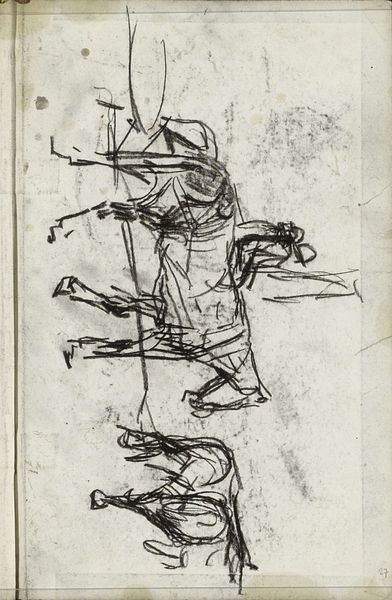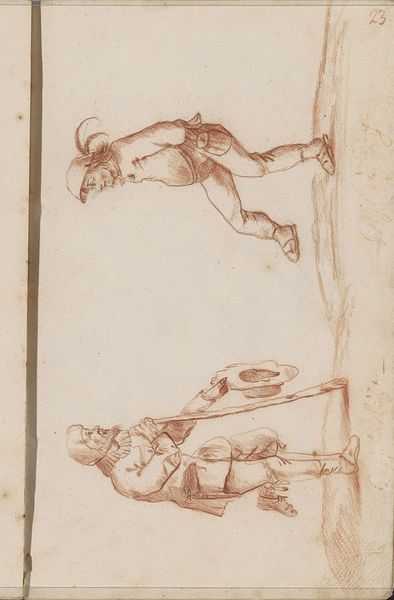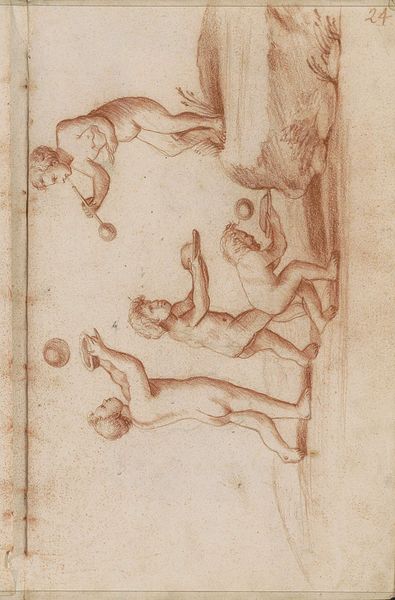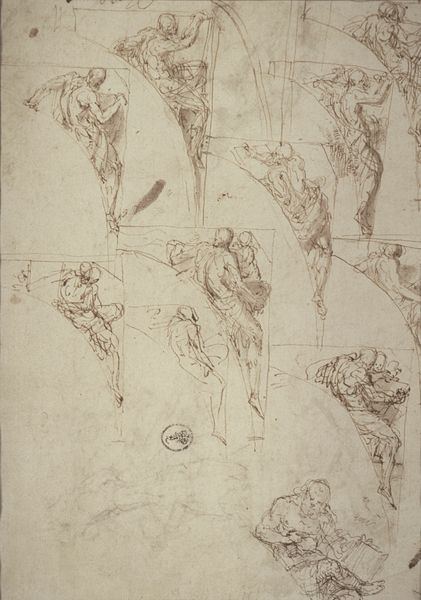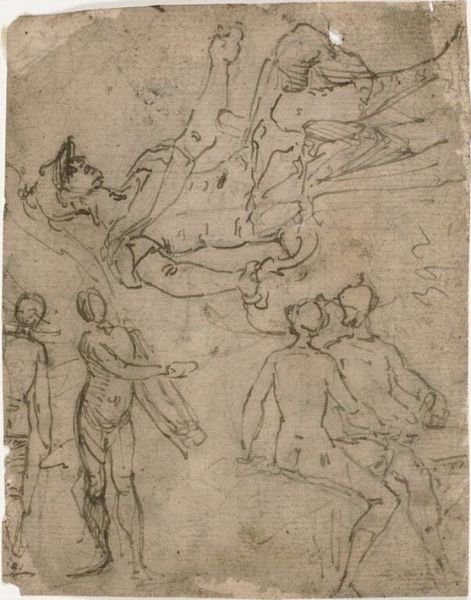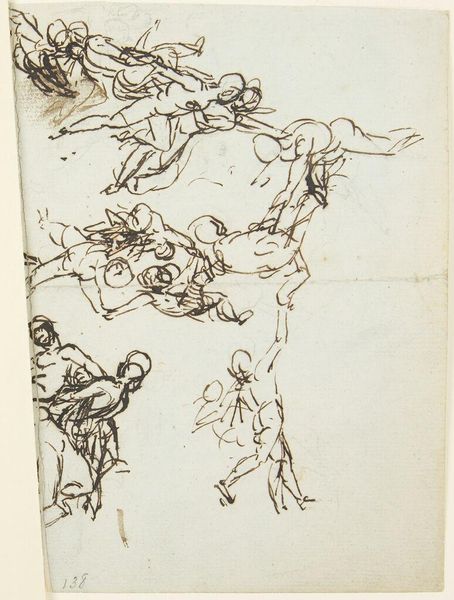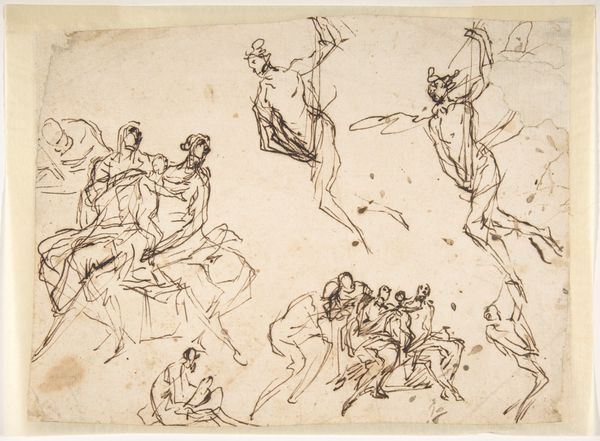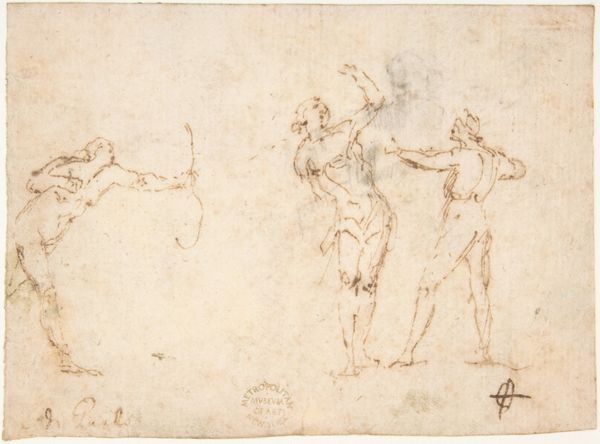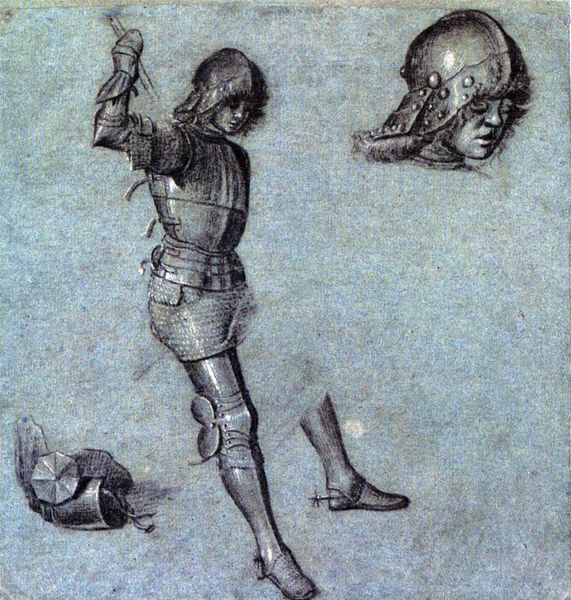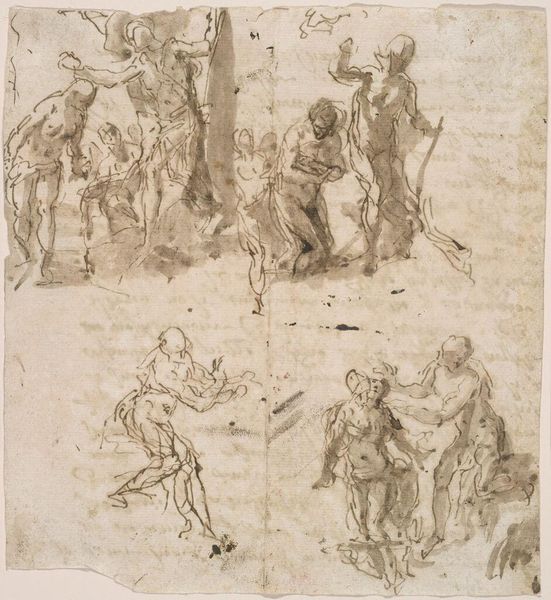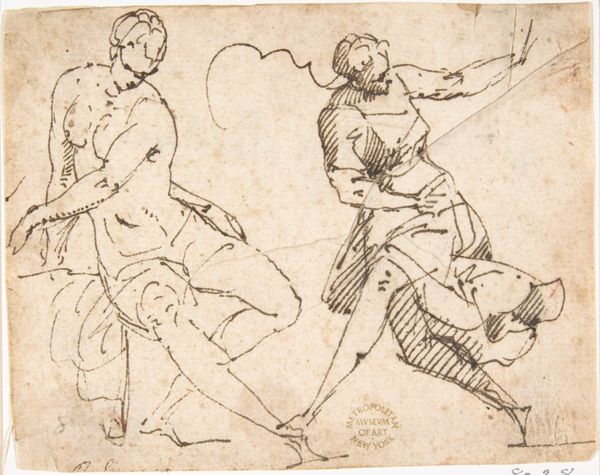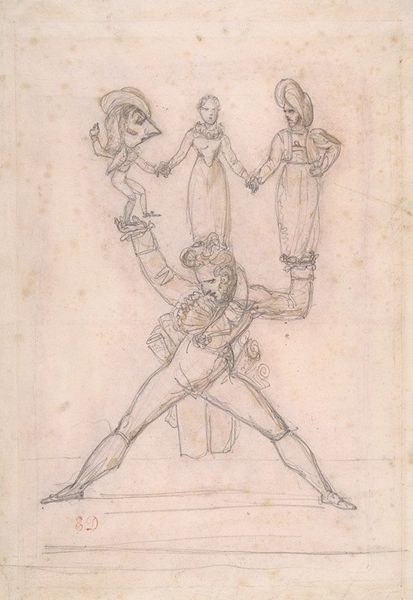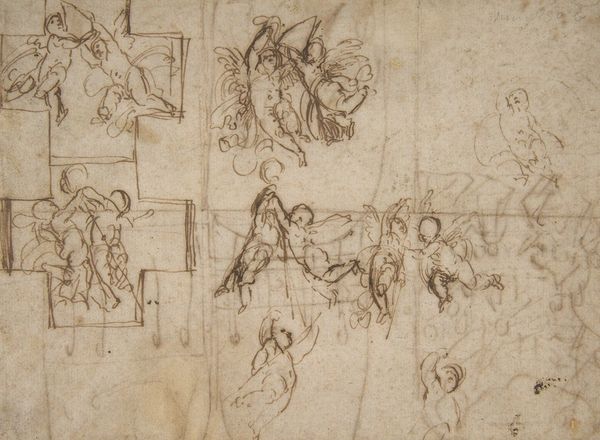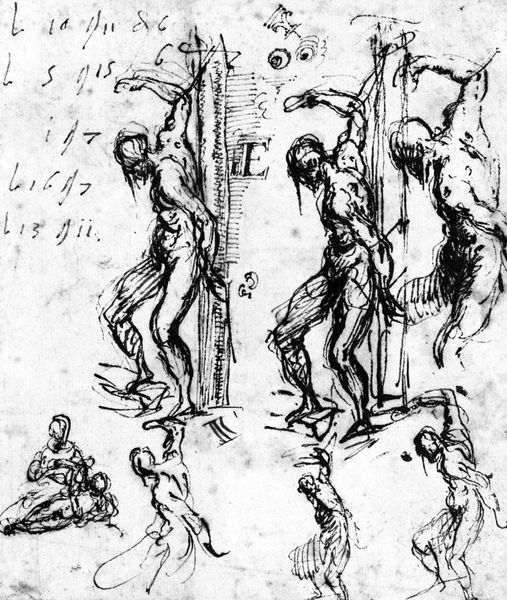
drawing, paper, ink, pencil
#
portrait
#
drawing
#
pencil sketch
#
figuration
#
paper
#
11_renaissance
#
ink
#
ink drawing experimentation
#
sketch
#
pencil
#
sketchbook drawing
#
history-painting
#
italian-renaissance
Dimensions: 27.8 x 20.8 cm
Copyright: Public domain
Curator: Right now, we're looking at Leonardo da Vinci's "Various Figure Studies," a work dating back to around 1490. You can find this gem housed in the Louvre, here in Paris. It's a compilation of sketches in ink and pencil on paper. What grabs you first? Editor: The energy! It's like eavesdropping on da Vinci's brain. The figures seem to burst with a life of their own, leaping and lounging. Almost a casual disregard for conventional constraints. It’s more vibrant and messy than I expected. Curator: Messy is an interesting choice of words! Note the masterful use of line. Da Vinci uses hatching and cross-hatching to create volume and shadow. You get a real sense of the human form, the weight and distribution of muscle. Even the more abstract mechanical device included possesses a kind of beauty. Editor: Absolutely! There's a kineticism to the drawings. A dancer balanced mid-leap, another in a moment of reflection. They remind us that the body is this extraordinary machine of flesh and bone, always in motion or poised for it. There's no stiffness. But isn’t it fascinating to find studies for narrative and history painting right beside these bursts of kinetic exploration and pure scientific diagrams? Curator: Yes, it points to da Vinci’s unified sensibility. For him, there was no real distinction between art and science, human form, and abstract principle. Consider that diagram near the upper portion of the work, it isn’t simply decorative; it's interwoven into this dance of figures, embodying a desire to explore the world both concretely and abstractly. It’s form and idea together, wouldn't you agree? Editor: I suppose that even the seemingly disparate elements are united in the singular imagination that spawned them. He looked deeply, scientifically and humanely. It's more than just art; it’s a quest for truth. These figures hint at some larger composition, a narrative we only glimpse, leaving room for our own interpretations and projections. He lets us join his process, the raw and unresolved. Curator: What you say touches on its eternal appeal: the dynamism, its imperfection, that allows it to echo long after we have moved along to other wonders. Thank you for these observations!
Comments
No comments
Be the first to comment and join the conversation on the ultimate creative platform.
